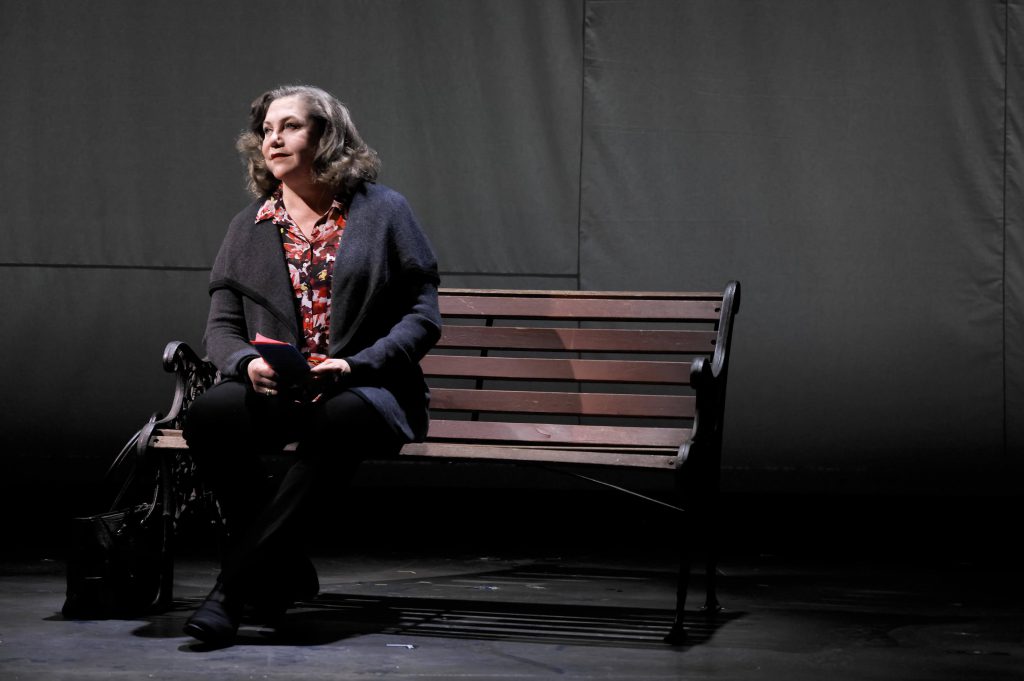Would You Still Love Me If… : It’s Kathleen Turner’s World, Everyone Else Can’t Quite Keep Up

Kathleen Turner in Would You Still Love Me If…
Would You Still Love Me If…
New World Stages
340 50th Street
Kathleen Turner at her best has been a vividly in-the-moment star and performer, full-blooded, larger-than-life, lusty and game. And so it comes as no surprise that she took over as director of John S. Anastasi’s Would You Still Love Me If… after their initial director left at the start of rehearsals. There was also an actress who dropped out of the play late in the game, and so everyone here can be forgiven for looking like they’re just trying to keep their heads above water.
Lesbian couple Danya (Sofia Jean Gomez) and Addison (Rebecca Brooksher) are introduced in bed together right after Danya has tried to take Addison to “pound town” with a large strap-on penis, which is revealed when she lets a sheet drop. Addison is focused on trying to adopt a child while Danya, it turns out, wants to start taking hormone treatments to start to become the man she has always felt herself to be. Danya hasn’t told Addison anything about this, even though she has gone to Dr. Gerard (Roya Shanks), the so-called “Michelangelo” of female-to-male reconstructive surgery, and has finalized her plan to go through with a gender transition. Danya tells her mother Victoria (Turner) about this plan and even gets Victoria to subsidize it with a $25,000 check. Victoria blunderingly tells Addison what’s going on with Danya, and this is where the play slides into permanent implausibility.
The big problem with Would You Still Love Me If… is that every scene is played as a matter of life-and-death conflict and there is no build-up to the main drama. Gomez, Brooksher, and Shanks fling themselves into every moment just as Turner herself does, but Turner’s style of headlong performing doesn’t comes as naturally to them as it does to her. When Turner sits down on a park bench and laughs, it comes from a gut-deep place that can only be called Rabelaisian, but the three younger performers working with her don’t have that kind of emotional command, and so a very problematic and messy play gets even messier.
Shanks’s Dr. Gerard is supposed to be as in flux as her patient Danya, and this is a fatally misguided dramatic choice because there needs to be one character here to keep some order, and Anastasi is not a controlled enough playwright to make the doctor’s problems organically flow into the rest of the play. The troubles the company had during their rehearsal period are obvious sometimes, especially during the awkward scene transitions, where furniture is hauled on and off slowly as discreetly sentimental music plays. Turner does what she can with this script, but there are instances where characters just reappear randomly or meet coincidentally that cannot be smoothed over. Anastasi has bitten off far more than he can chew with this play, but Turner and company give it their best shot.
You might also like 



















